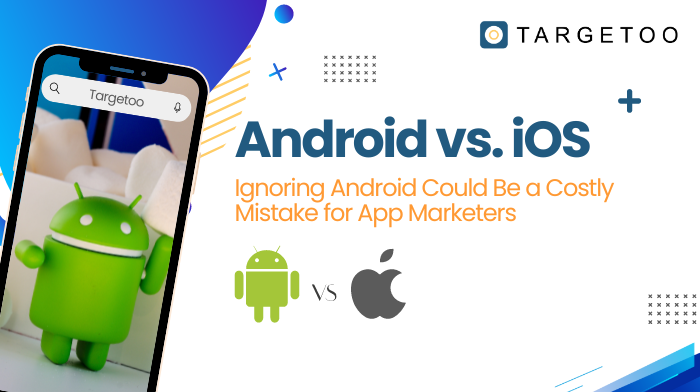When we think of mobile operating systems, iOS often comes to mind first. After all, iPhones seem ubiquitous, especially in certain regions. However, the reality is quite different when we look at the global picture. As of 2024, Android dominates the worldwide market with a 70.7% share. This might surprise many, but for mobile app marketers, it’s a critical insight that can shape successful campaigns.
While iOS maintains a strong presence, particularly in markets like the United States where it enjoys a 60.7% penetration, Android's broad reach, user-friendly interface, and accessibility have helped it capture a large and diverse audience, especially in emerging markets.
The Power of Android in Global Markets
Here’s a look at Android’s dominance across key regions:
India: 95%
Brazil: 81%
Mexico: 77%
China: 74%
These figures represent massive opportunities for mobile advertisers, yet many continue to prioritize iOS, often at the expense of missing out on a vast Android user base. Understanding the benefits of advertising on Android is essential for tapping into these growing markets.
Android’s Expansive User Base: A Goldmine for Advertisers
One of Android’s most significant advantages is its global market share, which translates to a broad and varied user base. Android’s reach extends to over 3 billion active users worldwide. Unlike iOS, which tends to attract a more affluent demographic, Android users come from diverse socioeconomic backgrounds. This allows advertisers to target a wider audience, tailoring campaigns to different segments based on location, income, and other factors.
Cost-Effective Advertising: Stretching Your Marketing Budget
In addition to its extensive user base, advertising on Android can also be more cost-efficient. User acquisition costs on Android are generally lower than on iOS, allowing advertisers to make more out of their marketing budgets. Data shows that cost-per-install (CPI) rates for Android apps—both gaming and non-gaming—are often lower than for iOS apps across most ad placements.
This cost efficiency means that marketers can reach a larger audience without overspending, making Android an attractive option for both new app launches and ongoing campaigns.
Diverse Ad Formats: Unlocking Creativity on Android
When it comes to ad formats and creative flexibility, Android offers marketers more tools to work with. For example, Android’s Custom Store Listings allow for a greater degree of customization compared to iOS’s Custom Product Pages:
Number of Versions: Android supports 50 versions vs. 35 on iOS.
Customizable App Elements: Android allows customization of titles, descriptions, icons, feature graphics, screenshots, and videos, whereas iOS offers fewer options.
Review Time: Android typically approves app changes within 1 hour, compared to iOS’s 24 hours.
Targeted Traffic Sources: Android supports both organic and paid traffic sources, whereas iOS is limited to paid traffic only.
This flexibility gives advertisers the power to craft highly tailored campaigns that resonate with different audience segments, enhancing overall campaign performance.
Data Accessibility: A Crucial Advantage for Android
The introduction of Apple’s App Tracking Transparency (ATT) framework has made data collection and campaign optimization more challenging on iOS. With stricter privacy controls, iOS advertisers have faced limitations, particularly in re-engagement campaigns.
Android, on the other hand, has been less affected by these privacy changes, making it easier for advertisers to access the data they need for precise targeting and effective re-engagement strategies. Android’s openness offers marketers more opportunities to refine their campaigns based on comprehensive data, driving better results.
The Case for a Balanced Strategy: Combining Android and iOS
A well-rounded mobile app marketing strategy should consider both Android and iOS. By focusing on both platforms, brands can maximize their reach and visibility, ensuring they connect with a wider audience.
Strategically diversifying ad spend across both operating systems helps to mitigate the risks associated with sudden changes in either platform. While iOS remains a key player in terms of consumer spending, ignoring Android would mean missing out on a significant portion of the mobile app user base.
Conclusion: Don’t Miss Out on Android’s Potential
The mobile app ecosystem is constantly evolving, and successful marketers are those who can adapt and seize opportunities across different platforms. While iOS may offer high consumer spending power, Android’s vast reach, cost efficiency, and flexibility make it a crucial component of any well-rounded mobile app advertising strategy. Balancing your focus between iOS and Android can drive long-term success and maximize your app’s potential in the ever-changing landscape of mobile advertising.




